"Tales of the Shire: A The Lord of The Rings" Release Date Announcement
621
2024 / 09 / 26
"Final Fantasy VII Remake" is a work that offers quite a few surprises. It’s not just a cinematic-quality upgrade to the classic original but also introduces many new designs in combat and storyline.
The real-time action battle system, improved from the ATB turn-based system, is more strategic. The details are more filled in, and it integrates the exciting storylines of several series spin-offs, allowing players to experience the once-familiar Midgar story in a fresh way.
"Surpassing itself, a complete transformation" was my evaluation of this masterpiece in 2020.
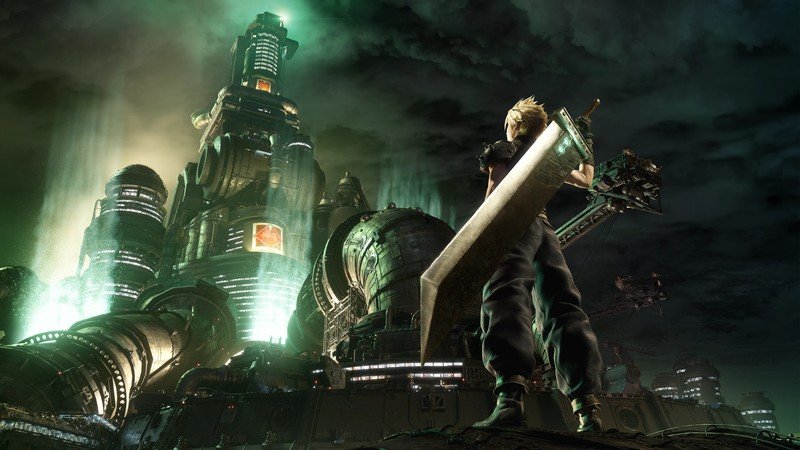
In producer Yoshinori Kitase’s plan, "Final Fantasy VII Remake" is just the first part of a remake trilogy, and this part’s storyline only covers up to half of the first disc of the original, just when the world exploration begins. The true main storyline of "Final Fantasy VII" starts with the journey across the world to find Sephiroth, which is the content of the soon-to-be-released second part—"Final Fantasy VII Rebirth."
Between these two parts, there is also the "Intergrade" Yuffie episode. Although Yuffie is very cute and the mini-games are quite fun, the storyline is small, and aside from teaming up, there aren’t many new gameplay elements. But since it’s just an expansion for the first part, there’s no issue. So, in my expectation, "Final Fantasy VII Rebirth" should be similar: a lot of new cutscenes, a few new elements, and a world map, and I would be satisfied.
However, after actually playing this work, I found that the scope of this second part far exceeded my expectations. You could even say it surpasses itself again in terms of the surprise it brings to players compared to the first part.
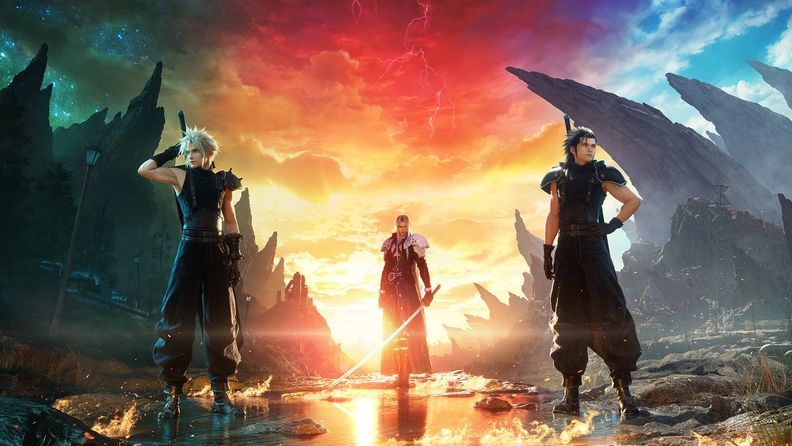
Full Visuals and Performance
The storyline of "Final Fantasy VII Rebirth" continues the style of the first part. Some story events have had their order adjusted. The Wutai region is not part of the exploration content in this game, but a certain segment of the original second disc's storyline has been moved up. However, as the producer mentioned before, "the overall direction is the same as the original," and there will also be unexpected parts.
Since discussing these storylines would more or less involve spoilers, I won’t elaborate here. What I can say is that the story content of this game is still close to the first part, with about 40 hours of content to tell the story of half of the original disc.
It’s also worth mentioning the evolution of the cutscenes in the story. Like the Yuffie episode, there’s no need to consider the PS4 version, so the textures, models, and lighting have significantly improved. Especially the characters’ vivid facial expressions during the cutscenes—the changes in their eyes, the twitching of their mouth corners, and cheeks are all clear to see. Sometimes, you don’t even need dialogue to feel the characters' emotional fluctuations.
However, possibly due to the larger scale of the scenes in this game, the graphics may appear slightly blurry in performance mode. Until the developers optimize this issue, I recommend playing in graphics mode. Although it’s only 30 frames per second, it doesn’t affect the gameplay, and the visual experience is much better.
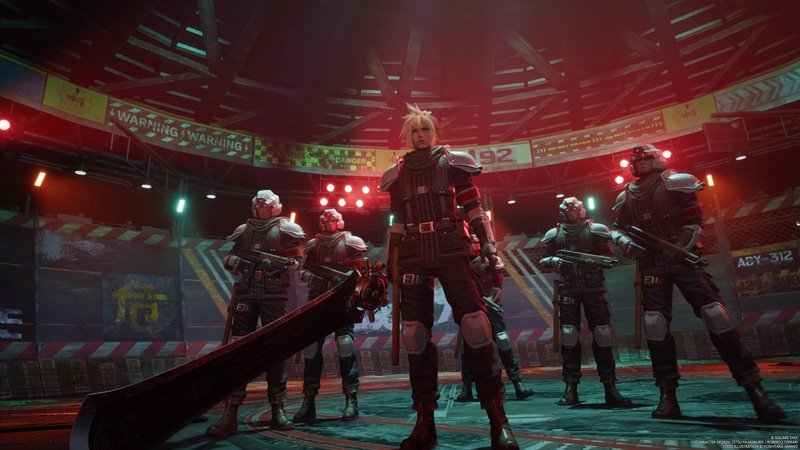
In graphics mode, the full visual quality almost gives me the feeling of watching a "Final Fantasy VII" movie. The game makes extensive use of this high-quality graphics to design many cutscenes.
This doesn’t just mean interspersing cutscenes into the main storyline. Sometimes, while you’re on the main quest, you can watch cutscenes while traveling, and there are also cutscenes during battles. After many spectacular CG scenes, there are seamless transitions into real-time gameplay cutscenes. Even during side quests, there are also plenty of animated cutscenes. The amount of time spent watching cutscenes throughout the entire process is almost maxed out. The stationary conversations that SE loves to use are rare in this game, as it seems SE has spared no expense in this aspect.
New Exploration in Open-World Style
Previously, I thought "Final Fantasy VII Rebirth" would present the entire planetary continent in an open-world style, but the game isn’t designed that way. There are six main regions and one sea area for players to explore, as well as two story-related areas.
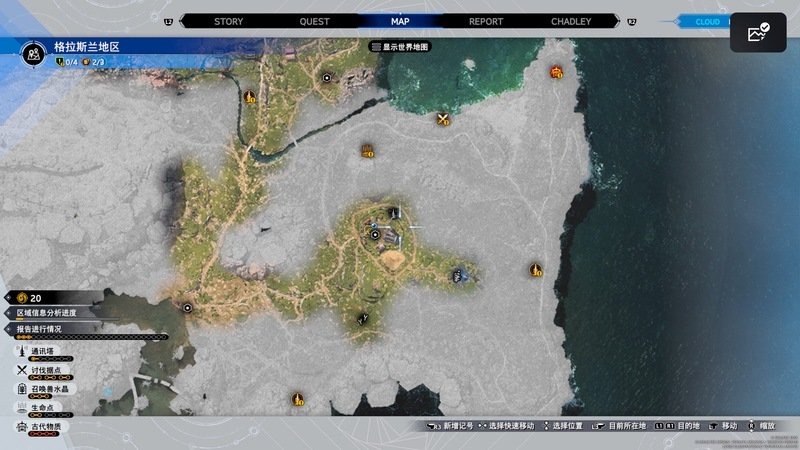
The transition between regions isn’t completely seamless. It usually involves a segment of the storyline or a dungeon to bridge the gap. When you return to explore later, it’s usually through direct teleportation, so each region can basically be seen as an open-world area. However, each map is large enough, and the game also has a wealth of collectible elements and many interesting guide elements.
When you first step into an area, you can't just rely on Cloud’s legs to run across the continent, so the first step is to find a Chocobo nearby. Following the Chocobo’s footsteps, you will naturally discover the first communication tower. Climbing to the highest point reveals the locations that can be explored on the map.
For example, if a revealed location is a hunting base, on your way there, you might occasionally encounter a chirping colorful bird. If you’re drawn to it, it will lead you to a nearby Life Point. By syncing with the Life Point, you can unlock the area’s historical story, treasure digging spots, or information on the location of mysterious ancient Materia.
As you continue to search for these treasures, you might also see a glowing square rock on the side of the road. Breaking it and following the light orb inside will lead you to a Summon Crystal, where you can sync with the summon.
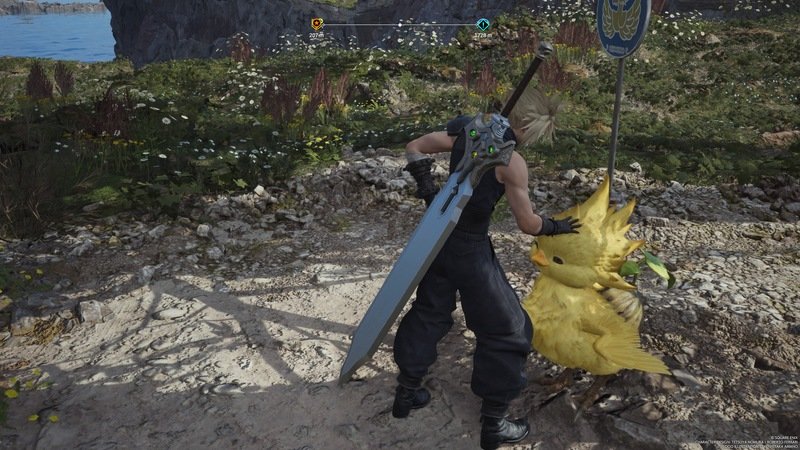
Sometimes, during exploration, even if you’re not deliberately searching, a cute baby Chocobo might come hopping along to greet you. Following it will lead you to a destroyed Chocobo Station, and raising the signpost will unlock a resting point where you can recover health and mana.
Completing these interest points isn’t just repetitive formulaic operations. Starting with the Chocobo, after finding it, the player needs to enter stealth mode, approach it from behind, and capture it to tame it. The initial areas are just simple stealth in the grass, but later areas include movable cover, stones to attract attention, bait to guide the Chocobo’s route, and so on.
Different regions' Chocobos have their own unique abilities: Mountain Chocobos can climb mountains, Forest Chocobos can jump on mushrooms and slide on branches, Sky Chocobos can glide, and Sea Chocobos can jet-fly. Using these abilities, the communication towers in each area have corresponding ways to climb, and the Life Points are also hidden in terrains that require Chocobos to cross.
The hunting bases have some educational aspects. To achieve a perfect hunt, you generally need to meet three conditions: “Trigger Heat,” “Trigger Break,” and “Time-Limited Hunt.” Players need to use character traits and exploit weaknesses to deal with various enemies. In this process, you gradually master the combat techniques of each character. After completing all the hunting bases, there is usually a hidden hunt where you can challenge the area's final boss. At this point, players can use their previous hunting experience to devise various tactics and achieve the challenge.
The sync with Summon Crystals is somewhat like a memory game, requiring players to press the buttons in sync with the rhythm given by the summon. It’s not difficult, and after completion, it also lowers the difficulty of the corresponding summon in the battle simulator, increasing the level of the summon’s magic crystal stone as a reward for clearing the summon challenge.
Ancient Materia is equivalent to a side quest challenge, often involving various mechanic battles or mini-game levels, each area offering different challenges. Additionally, each area also has a rather cute Mog House, where passing its prank tests allows you to open the Mog Shop to buy various useful items...
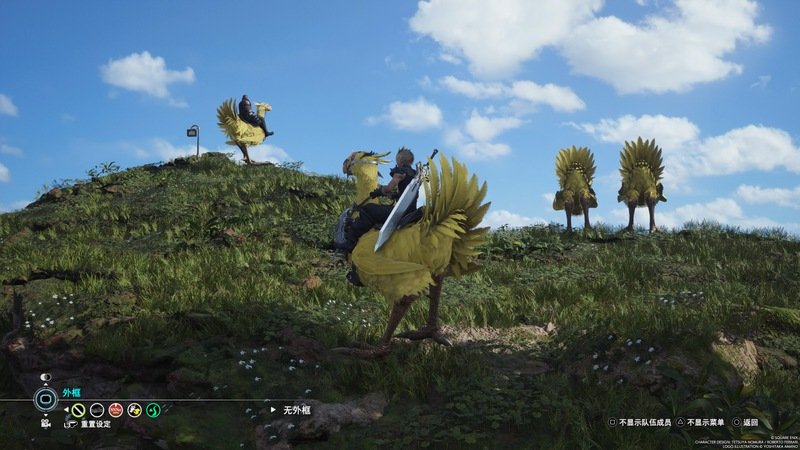
The diverse gameplay exploration elements, combined with interesting guidance methods, make it easy to cover all the points of interest on the map without realizing it. This is the first time SE has done such a thorough job with open exploration, almost eliminating any sense of repetition.
Aside from this, I strongly recommend not skipping the side quests, not just because of the fully-fledged performances I mentioned earlier, but more importantly because each side quest’s story is crucial. You can see another side of Cloud's companions beyond the main story, and the bond stories between them and the regions or local residents are often quite touching.
Some Imperfections in World Exploration
While I’ve highlighted many advantages of world exploration, there are still a few imperfections in this aspect. Due to the improved graphics in this game, most of the distant landscapes seen during exploration are accessible, which is great. However, when you reach the game’s designated photo spots, you're usually at the region's boundary, where the distant scenery is just a barren sea level, very monotonous and lacking any sense of "fantasy."
Additionally, during exploration, the character's movement logic still follows the same pattern as in the first part: terrain with significant height differences is strictly off-limits. Even though this game features Chocobos that can traverse terrain, in most cases, they must follow a fixed route—not all walls can be climbed, and not all cliffs can be flown over.
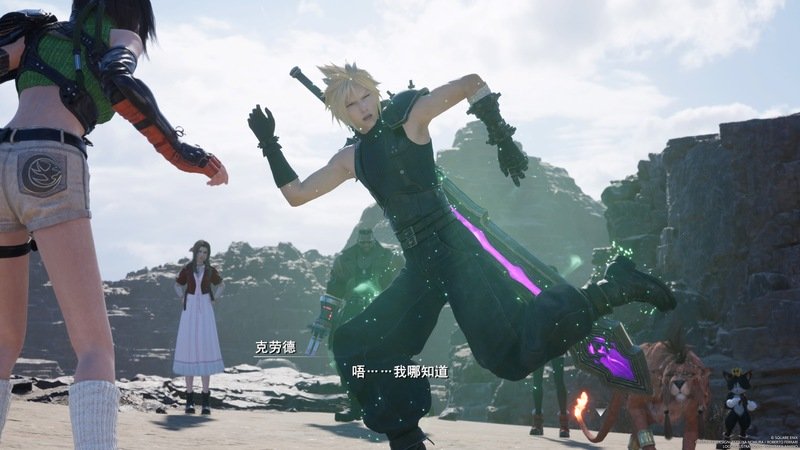
Not until the last region do you unlock the jet-powered Sea Chocobo, allowing you to freely traverse mountains and seas. However, each type of Chocobo is confined to its corresponding region, so players can’t ride the Sea Chocobo back to explore previous areas, which somewhat affects the sense of exploration freedom.
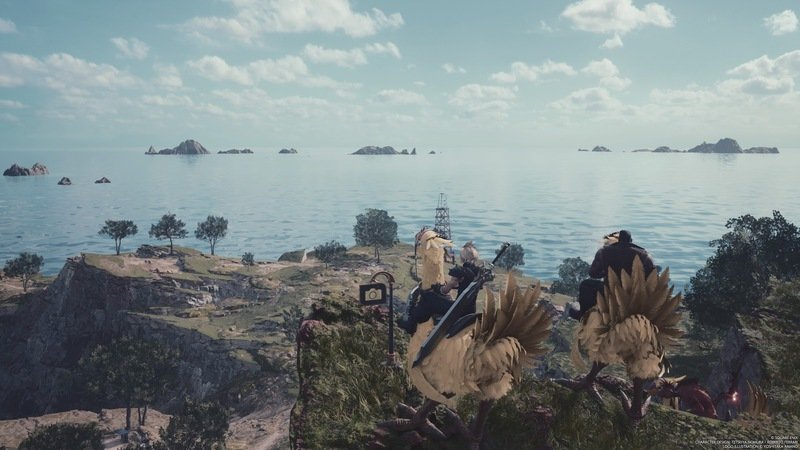
Abundant and Satisfying Minigames
The part of the game that surprised me the most is the abundance of minigames. The previous entries like Fort Condor, squats, G-Bike, and box smashing are fully carried over into this game, with some new mechanisms added. Newly introduced games like Chocobo racing, Pirate Riot, and 3D Brawler offer unique field designs and a variety of difficulty levels.
Unlike the first part and the Yuffie chapter, where minigames were just a small diversion after battles, this game features nearly twenty types of minigames covering a wide range of genres, making it abundantly satisfying. Listing them all might be tedious, so I’ll focus on the two that left the deepest impression: "Queen’s Blood" and "Piano."
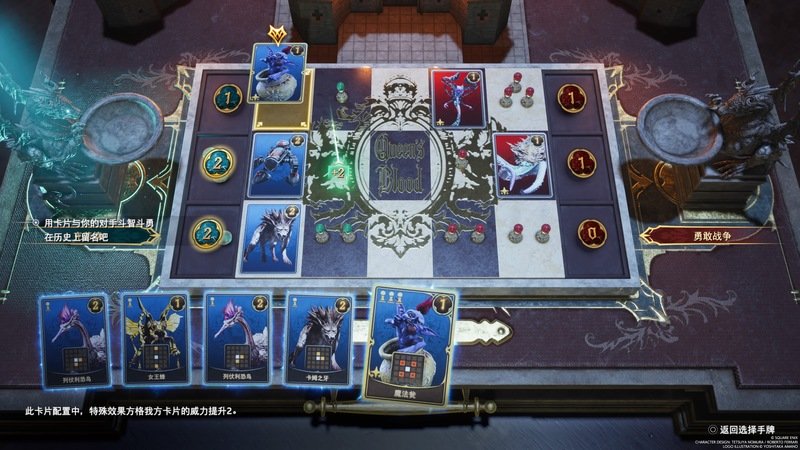
"Queen’s Blood" is a card game where players compete to dominate positions on a three-row, five-column board using cards. Once the board is filled, the player with the highest power total in each row wins.
There are nearly a hundred collectible cards in the game, divided into three levels. The higher the level, the stronger the card's effect, but it can only be placed in the corresponding level slot. Level 1 cards are important for claiming spots and upgrading slot levels, while Level 2 cards can trigger various effects, such as boosting the power of specific slot cards or directly eliminating cards in corresponding slots. To counter these effects, Level 3 cards can accumulate more power.
For example, a Level 3 Giant Serpent card gains 1 power whenever an allied card is destroyed. By using Level 2 cards with elimination effects, you can continually trigger the Giant Serpent’s ability. Some Level 1 cards have a deathrattle effect, making them ideal for doubling down on the elimination effect.
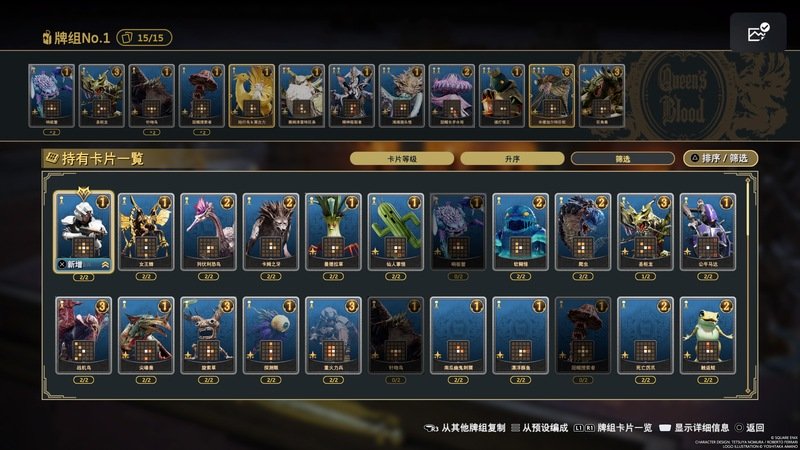
This is just one of the many strategies in the game. When facing opponents with different strategies, players must tailor their decks to exploit the weaknesses of the opponent's deck. The variety of battle dynamics and strategic fun are so rich that I believe the game could stand alone as a separate title.
The "Piano" minigame, by contrast, isn’t as innovative; it’s essentially a rhythm game. The game offers piano rearrangements of several original Final Fantasy VII tracks. However, the way the game simulates piano keys is quite interesting, requiring the use of both analog sticks in sixteen directions to simulate piano keys.
As your combo count increases, additional instruments will gradually join in, making the ensemble feel richer the more perfectly you play. Some piano pieces are tied to side storylines, where you might be playing while watching live audience reactions or accompanying a band. This creates a powerful emotional resonance, even with familiar melodies, and can still stir your heart.
When you perfectly play a piece, the positive feedback from in-game NPCs, combined with the immersive experience, provides a great sense of accomplishment. And it’s not just the piano that gives positive feedback; the game has designed unique NPC performances for almost every minigame, making you feel like an adored "Minigame King" without realizing it.
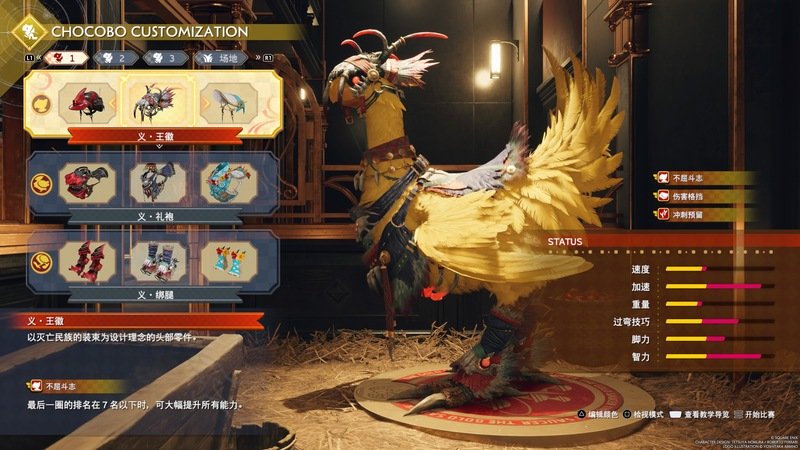
As players progress through the main storyline, one minigame after another unlocks, continually providing fresh motivation to keep playing, even towards the end of the game. This kind of experience is quite rare in a JRPG.
However, it should be noted that with so many different types of minigames, not every type will be a player’s forte. If you're aiming for full completion, you’ll need to clear every difficulty level of every minigame. If you're a perfectionist, you might feel a bit “trapped” in the later stages, as the high-difficulty minigames have very tight conditions where even a single mistake requires starting over. That said, this isn’t really a flaw in the game itself.
The Avalanche Spirit of Seven Characters on the Battlefield
The battle system of Final Fantasy VII Rebirth is similar to the first part, but with the addition of the synergy mechanic, it offers a significantly different experience. The synergy mechanic was introduced in the Yuffie chapter, but this game deepens the synergy mechanic among the seven main characters.
Through upgrades on the character skill tree, you can unlock synergy abilities and actions. Synergy abilities require each corresponding character to consume a certain amount of ATB to build up. When used, they don’t consume ATB, and the animation grants invincibility, similar to Limit Breaks.
Dual synergy attacks not only deal significant damage but also provide various buffs for a period of time, such as turning the Limit Gauge to LV3 or not consuming MP for a while. Whether used to chain powerful skills or to finish off enemies with a BREAK, synergy abilities are extremely useful. Some strong enemies even have moves that can only be interrupted by synergy abilities.
Synergy actions don’t require any resources to execute and act as advanced attack moves. For example, Tifa’s dodge counter and Barret’s three-hit charge can be used to connect basic attacks and ATB skills, allowing for fluid combos akin to an action game.
Even though synergy skills are highly practical, players who are not used to this mechanic can still approach battles with the mindset from the first part. The skill tree can be reset for free, allowing players to tailor character passives and skill points according to their preferred playstyle.
The skill tree also allows players to unlock four-element skills that don’t consume MP, which alleviates the initial shortage of Materia slots to some extent. The saved slots can be used to equip Materia related to auto-skill casting, allowing the AI to build up the synergy gauge automatically.
Moreover, the game introduces new elements to each character's weapon skills.
Cloud can unleash the true Braver, transforming into a brute-force warrior in Braver mode, with each slash dealing massive damage. Aerith’s Magic Apostle skill allows her normal attacks to be charged, with added effects such as time-stopping power when enemies are close or turning normal attacks into laser attacks. Tifa's new Secret Technique Release: Break lets her switch from physical to non-elemental magic attacks, making it easier to build the Heat gauge. Barret’s Extra Ammo skill strengthens his normal attacks, while his Soul Burst skill grants the whole team an ATB boost.
These abilities are incredibly useful on their own. Combined with Yuffie’s ever-changing attributes, Red XIII’s defense counter specialties, and Cait Sith’s Moogle summons, the variety in party compositions and playstyles becomes vast.
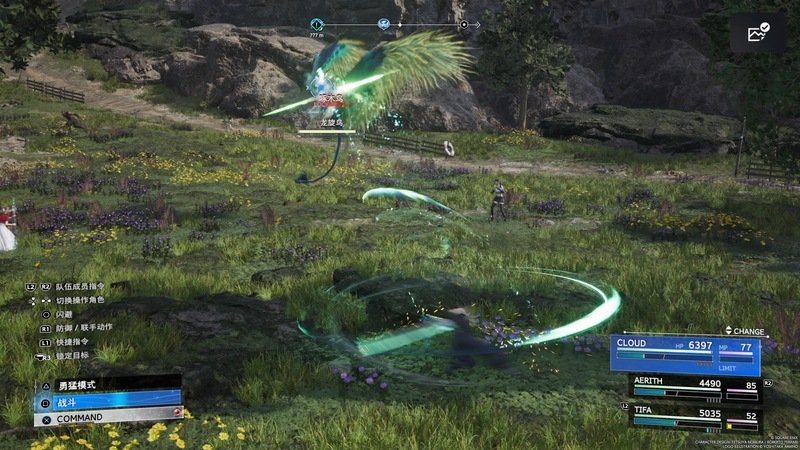
Regardless of your combat approach, the reserve members of your party will appear in battle scenes. Although you can only control three characters at a time, you can still see all seven characters on the field.
The reserve members aren’t just for show; they also slowly build up their synergy gauge. At critical moments, these reserve members can provide crucial finishing blows or buffs. At those moments, you’ll truly feel the "Avalanche spirit" at work.
Conclusion
By the time I finished Final Fantasy VII Rebirth, I had unknowingly played for 60 hours. New performances and minigames kept popping up, and just as I synchronized with one Life Point, a Treasure Point would immediately be revealed...
Although this is a sequel to a remake, players are constantly engaged with new content. Compared to the previous game, the content volume has practically doubled. The newly interpreted, larger storyline will once again bring players to tears and joy.
As one of the co-directors previously mentioned in an interview, this game is the most content-rich entry in the series.
Score: 9.5
Pros:
Abundant performances satisfy audiovisual experiences
Well-guided sandbox world
Rich exploration content
Abundant and satisfying minigames
Synergy mechanics add depth to combat
Cons:
Movement logic hasn’t improved much
Easy to encounter minigames you’re not good at
